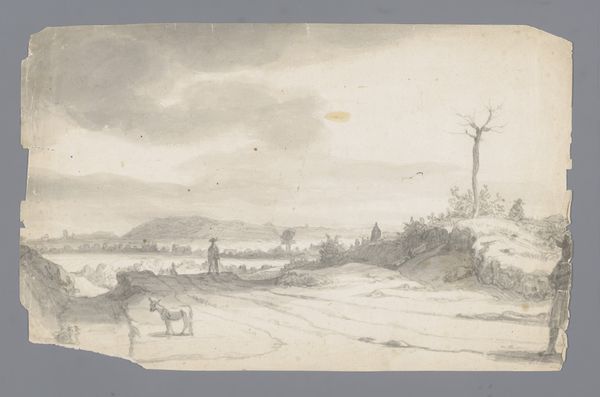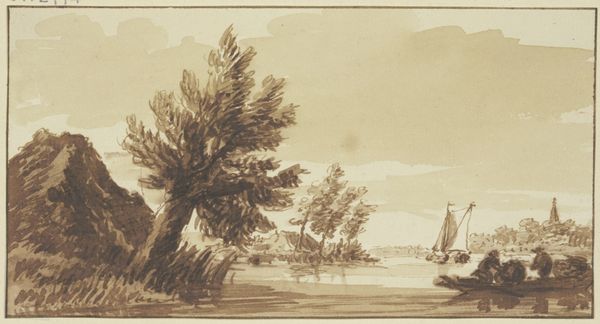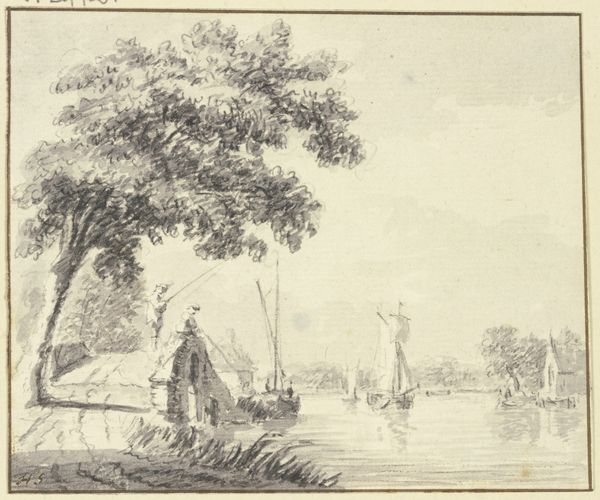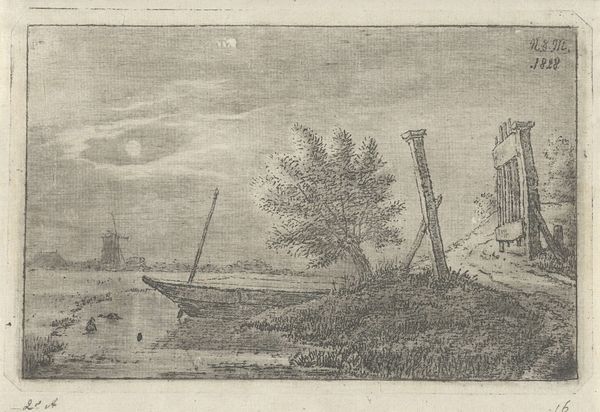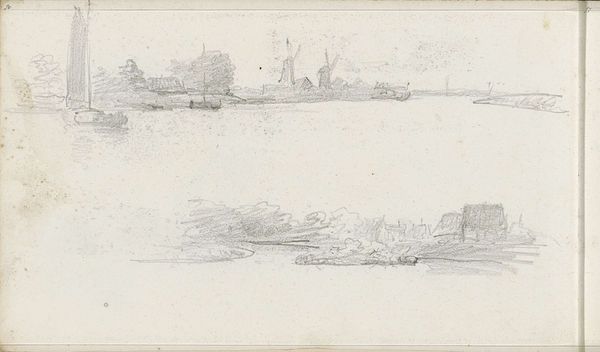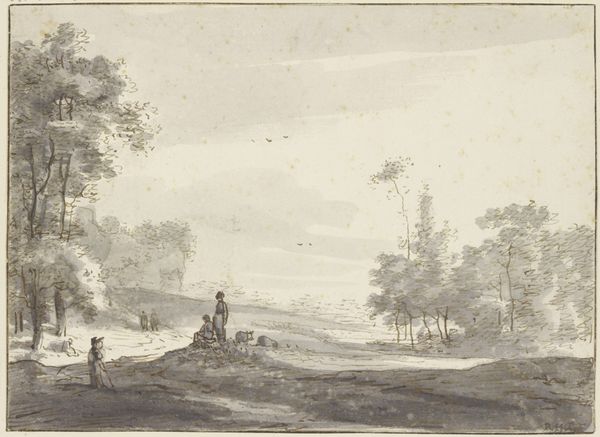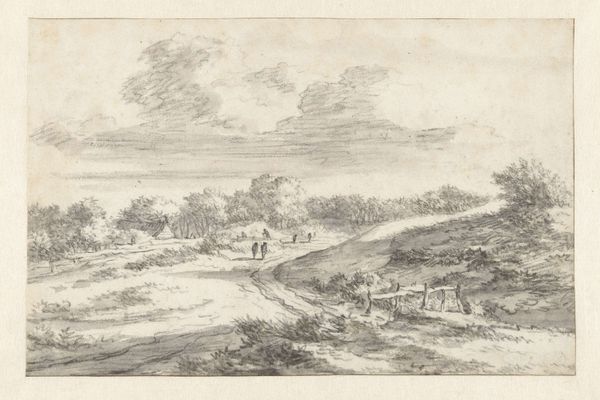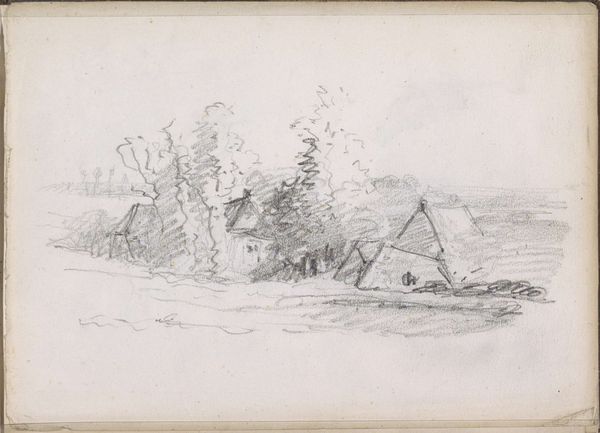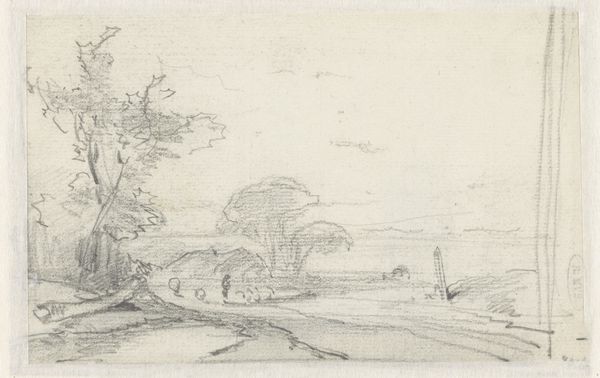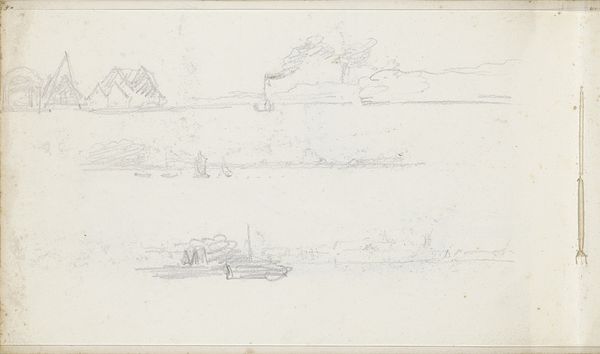
drawing, ink, pencil
#
drawing
#
landscape
#
ink
#
romanticism
#
pencil
#
15_18th-century
Copyright: Public Domain
Editor: Here we have Franz Kobell’s “A Boat on the Sea,” a landscape drawing done with ink and pencil, presumably from the 18th century. It's a very subdued, almost melancholy piece. What story do you think this drawing is trying to tell? Curator: Well, its somber tone and focus on nature certainly align it with the Romantic movement. It depicts a ferry scene under an overcast sky or perhaps a sunset. Do you notice the light? The rays emerging from the center… the people gathered? These scenes become more important when contextualized. This work fits neatly into a rising interest in the sublime in nature but also a subtle power dynamic. A collective facing immense nature, waiting for fate. Editor: A power dynamic, that’s interesting! What exactly do you mean by that? Curator: The people are depicted on a boat heading into that light. What could it mean? Is it literal or symbolic? Transportation certainly holds meaning. We often forget that before industrialization, a trip such as this was one of the great journeys many took, for many people. The work makes an ordinary event seem a lot more significant, a larger role than a simple ferry journey, making a universal connection to nature and fate. Does that help illuminate it for you? Editor: Definitely. Thinking about the social context adds a layer I hadn’t considered. I see it now - the vastness of nature compared to the tiny boat full of people, emphasizes both human vulnerability and resilience. Thanks for pointing that out! Curator: Of course! Thinking about the audience reception and cultural forces, like burgeoning ideas of self-determination against the immense nature, is always essential in interpreting art from this period.
Comments
No comments
Be the first to comment and join the conversation on the ultimate creative platform.
